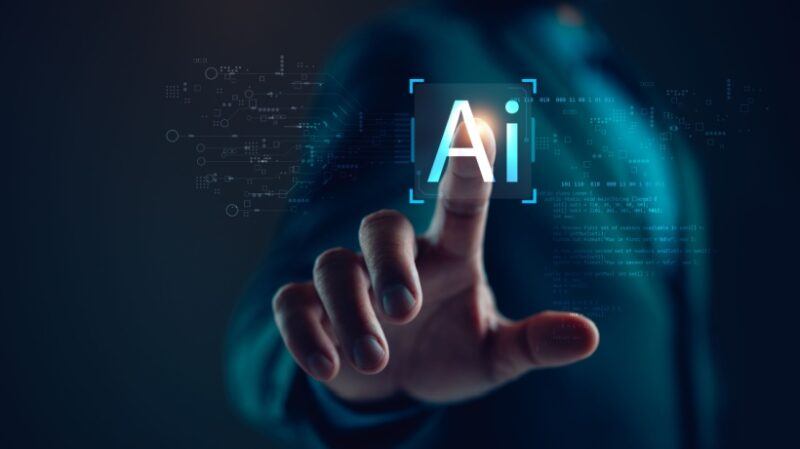
Revolutionizing Learning in 2025: The Power of Generative AI
As we enter the year 2025, the landscape of Learning and Development (L&D) is undergoing a profound transformation. At the core of this shift lies generative AI, a dynamic technology that is reshaping how training, upskilling, and continuous learning programs are delivered. By offering personalized learning experiences, streamlining content creation, and providing real-time support, generative AI is empowering organizations to enhance their workforce’s skills more efficiently than ever before. Let’s explore how this cutting-edge technology is revolutionizing L&D in 2025.
Generative AI And L&D: Key Trends for 2025
Personalized Learning At Scale
Generative AI’s most significant contribution is its ability to deliver personalized learning experiences on a large scale. In the past, creating individualized learning paths for employees in large organizations was arduous and resource-intensive. However, generative AI now has the capability to analyze data from diverse sources, such as employee performance metrics, job roles, and learning preferences, to automatically tailor learning experiences.
AI-driven platforms can generate customized content, ranging from microlearning modules to interactive simulations, that adjust in real-time based on a learner’s progress. This ensures that employees receive targeted training when they need it, reducing time spent on irrelevant material and boosting engagement. For instance, an AI-powered system can identify when an employee is struggling with a concept and generate additional exercises or resources promptly to address the gap.
- Case in point: In 2025, tech giants like IBM and Microsoft are already leveraging generative AI to personalize training programs for their workforce. These programs adapt dynamically to individual skill levels, offering more efficient and tailored learning paths that help employees stay competitive in fast-paced industries.
Streamlining Content Creation And Maintenance
Traditionally, developing training content has been a laborious process requiring significant human input. However, generative AI tools are revolutionizing content creation by automatically generating learning materials, including text, video, and interactive content, based on predefined learning objectives.
By 2025, L&D teams are increasingly using generative AI to produce and update training materials rapidly and at scale. These systems can draw from a vast repository of company data, industry trends, and real-time information to create relevant and up-to-date content, reducing the need for manual intervention. This automation allows L&D professionals to focus on strategic tasks like designing learning experiences and assessing program effectiveness.
Generative AI also simplifies content maintenance by automatically reviewing training modules and flagging outdated or redundant information, ensuring employees always have access to current resources.
- Example: In the pharmaceutical sector, companies like Pfizer are harnessing generative AI to update their compliance training content as regulations evolve. By using AI technology, these organizations ensure their training stays compliant with the latest standards without the need for extensive manual updates.
Enhancing Learning In The Flow Of Work
Learning in the flow of work is a growing trend that aligns seamlessly with generative AI capabilities. Rather than pulling employees away from their tasks for formal training sessions, generative AI enables real-time learning interventions that seamlessly integrate into the workday. Whether by offering immediate support or providing step-by-step guides for complex tasks, AI tools make learning accessible and immediate.
For example, AI-powered chatbots can offer instant answers to employee questions, suggest relevant learning modules based on current tasks, or generate practice exercises. This real-time support allows employees to acquire new skills and solve problems without disrupting their workflow.
In 2025, companies are shifting towards agile, on-demand learning systems with the help of generative AI. This transition not only enhances productivity but also boosts learner engagement as employees can apply new knowledge directly to their job tasks.
- Real-life illustration: Retail giant Walmart has integrated generative AI into its employee training programs, providing instant access to learning modules via mobile devices on the shop floor. This enables employees to address customer service challenges in real-time, enhancing both their skills and the customer experience.
The Future of AI-Driven L&D: A Look Ahead
As generative AI evolves, its role in L&D will expand further. One key area of development is AI-driven adaptive learning systems, which will refine learning paths continuously based on performance data, feedback, and changing job requirements. These systems will not only deliver personalized learning experiences but also predict future skill gaps, allowing organizations to address training needs proactively.
Moreover, advancements in Natural Language Processing (NLP) will lead to more conversational and intuitive AI interactions, making it easier for employees to seek help, ask questions, and engage with learning content. Virtual tutors powered by NLP could become a staple in L&D programs by 2025, providing human-like guidance and mentorship.
Generative AI will play a vital role in diversity, equity, and inclusion (DEI) initiatives by assisting L&D teams in creating unbiased and culturally relevant content that resonates with diverse workforces. AI systems can be trained to identify and eliminate bias in training materials, ensuring a more inclusive learning experience.
Conclusion: Embracing Generative AI for L&D Success
Generative AI is not just a futuristic concept—it’s a game-changer shaping the future of Learning and Development in 2025. By enabling personalized learning at scale, streamlining content creation, and facilitating learning in the flow of work, AI is revolutionizing how organizations approach employee development. As L&D professionals adopt these new capabilities, they will be better equipped to meet the evolving needs of the modern workforce, enhancing productivity, engagement, and overall success. To stay ahead of the curve, L&D practitioners must continue exploring and integrating generative AI solutions, ensuring they are prepared not only for today’s challenges but also for the future.



